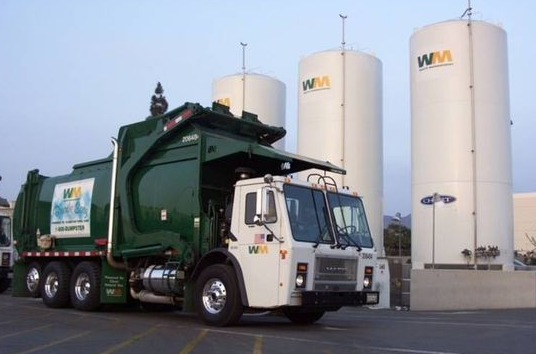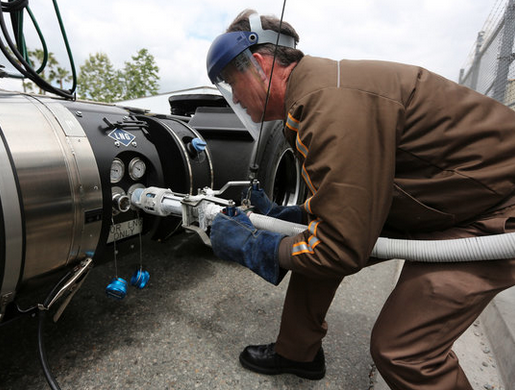Natural Gas Powered HD Engines Key to California Air Quality Says Study
 As California policymakers and environmental regulators work to balance air quality and climate protection planning, a new study commissioned by Southern California Gas Co. (SoCalGas) suggests that heavy-duty engines powered by natural gas can provide a viable “pathway” that can simultaneously help the state achieve pollution emission and greenhouse gas (GHG) reduction targets.
As California policymakers and environmental regulators work to balance air quality and climate protection planning, a new study commissioned by Southern California Gas Co. (SoCalGas) suggests that heavy-duty engines powered by natural gas can provide a viable “pathway” that can simultaneously help the state achieve pollution emission and greenhouse gas (GHG) reduction targets.
The peer-reviewed “Pathways to Near-Zero-Emission Natural Gas Heavy Duty Vehicles” report calls on California policy makers to enact policies and programs to encourage the development and commercialization of these ultra-low-emission motor vehicle technologies. The report was prepared by Gladstein, Neandross & Associates, a leading consulting firm specializing in alternative transportation fuels and technologies.
The authors found “technology forcing” requirements, which direct manufacturers to phase-in sales of battery-electric vehicles or large transit fleets to buy zero-emission buses, have not resulted in the commercialization of zero-tailpipe emission vehicles as quickly as air quality regulators hoped or planned.
“This study’s findings align with what the transportation industry marketplace is already demonstrating through increasing adoption of ultra-low emission natural gas-powered heavy-duty engines in trucking, shipping and public transportation such as buses and sanitation trucks,” said Rodger Schwecke, vice president of customer solutions for SoCalGas.
By contrast, zero emission vehicle mandates spurred tremendous innovation by manufacturers of internal combustion engines, emission control equipment, and advanced vehicle drive trains, resulting in significantly increased options available to policy makers to meet the state’s air quality and GHG reduction goals.
 “Many state planning documents rely exclusively on electric vehicle technology that may not be viable in heavy-duty applications and we hope the study will encourage California’s policy makers to implement policies to support the development of other viable ‘pathway’ technologies to help meet environmental goals in the near-term,” added Schwecke.
“Many state planning documents rely exclusively on electric vehicle technology that may not be viable in heavy-duty applications and we hope the study will encourage California’s policy makers to implement policies to support the development of other viable ‘pathway’ technologies to help meet environmental goals in the near-term,” added Schwecke.
Heavy-duty vehicles fueled by natural gas are recognized by the California Air Resources Board (ARB) as a method of reducing GHG emissions. Today’s commercially available natural gas engines already emit nitrogen oxides (NOx) at levels well below the current (2010) federal heavy-duty engine standard.
This provides a low-emission, low-carbon baseline upon which engineers have begun to apply well understood technologies to improve the emissions performance and fuel efficiency of conventionally-fueled engines.
Engine manufacturers have already begun integrating technologies into natural gas heavy-duty engines, and are expected to bring products to market in the next few years with NOx emissions less than 0.05 g/bhp-hr. At the same time, advancements in engine and vehicle design will dramatically increase fuel efficiency, thereby reducing
Additional top-level findings include:
Near term utilization of technologies such as optimized compression ratios, enhanced three-way catalysts, integration of electric and hydraulic hybridization, improved aerodynamics, and low pressure storage are expected to help reduce NOx emissions from natural gas heavy-duty vehicles by 75 percent.
Research indicates that heavy-duty natural gas engines are on a trajectory to be certified at a NOx level of 0.02 g/bhp-hr, an emissions level so low that it equates to the power plant emissions that would result from charging an electric vehicle of a comparable size.
Category: General Update, Green, Management










